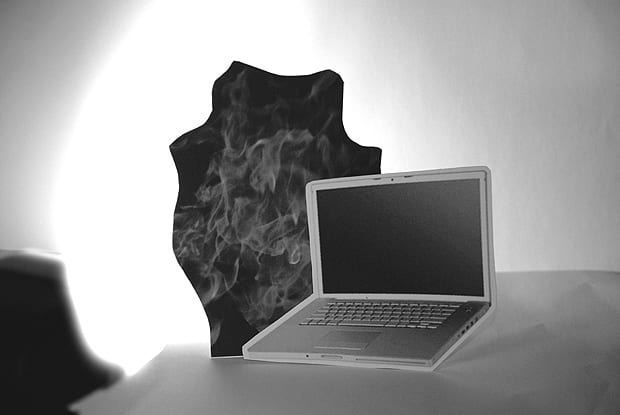
words Genevieve Bell
It was in Malaysia that I first encountered paper funerary technologies. I was there doing fieldwork, exploring the ways in which the emerging “middle classes” in urban Asia were experiencing new information and communication technologies. For nearly two years, from 2002 to 2004, I moved between Asia and America – in and out of homes, lives and distinct moments of time. But this particular moment still stands out.
You couldn’t miss the store. It was a classic Penang shop-front, except for the colour. It was pink, a loud bubble-gum pink, trimmed with darker stripes and festooned with red lanterns and flags. It sat on the corner of two busy streets in Penang’s bustling Chinatown. Inside, you could find almost anything for your home-furniture, statues, clocks, lamps, rugs, Feng Shui charms, ancestral altars, and many things red and gold.
Tucked away in the back corner of the store, there was also a section that sold funerary goods. Hanging from the ceiling, suspended on a hook along with a paper motorcycle, there is a bundle of paper mobile phones-the big old brick kind. Further investigation yielded a paper laptop and two small mobile phones in boxed sets replete with paper phone chargers, paper Rolex watches, and paper lipstick. The accuracy and level of detail of these objects was often surprising.
In traditional Chinese culture, people burn paper offerings for gods, ghosts and ancestors. There are paper objects for religious occasions, for festivals, for ceremonial events – part of both public worship and private devotion. In this cosmology, fire transforms all these paper objects into real things in the other world. At funerals, and during Qing Ming – a yearly festival at which ancestors and family are honored – you burn paper money, paper gold nuggets, paper clothes, paper cars, paper cigarettes, paper beer, paper pork buns, paper false-teeth; and even a range of every day household items. In Shanghai in the 1930s, wealthy families burned full-sized paper copies of Rolls Royce and Bentley cars to ensure their ancestors had appropriate transportation. Family obligations, in this world view, do not end with death. Instead, as a good child, you take care of your family and see to their needs in perpetuity. Today, in many Chinese communities around the world, a range of newer information and communication technologies have been added to the pyre of paper goods.
And over the years, in other funerary goods stores in Penang, Ipoh, Kuala Lumpur, Singapore and Hong Kong, I have found more paper technology-a desktop PC with an operating system, USB ports and a mouse; a flat panel LCD TV screen with a remote control and HDMI outputs; game consoles with all the buttons and hints of small blinking lights; and a branded mobile phone, prepaid phone cards, a charger and a carrying case. As an anthropologist, I had to ask the next question: “Who were the ancestors calling, are they calling you?”
This question made one woman laugh at loud. “No,” she said emphatically, “don’t be foolish; they are calling each other.” At least one other family I spoke with told me they upgraded their ancestors’ mobile phones every year during Qing Ming, burning them a newer model or a better brand, and providing them with more pre-paid minutes. Keeping up and keeping connecting are pressures that can, apparently, transcend death.
In her wonderful book, For Gods, Ghosts and Ancestors: The Chinese Tradition of Paper Offerings (2007), Janet Lee Scott describes the paper offerings she found in Hong Kong as manifestations of “daily necessities” – necessary for living and for life beyond this world. These paper goods form an account of the ways in which new technologies are making themselves at home in our lives; the objects and the experiences they encode become significant symbols of love, respect and family duty.
Genevieve Bell is an anthropologist and director of user experience at Intel.

















